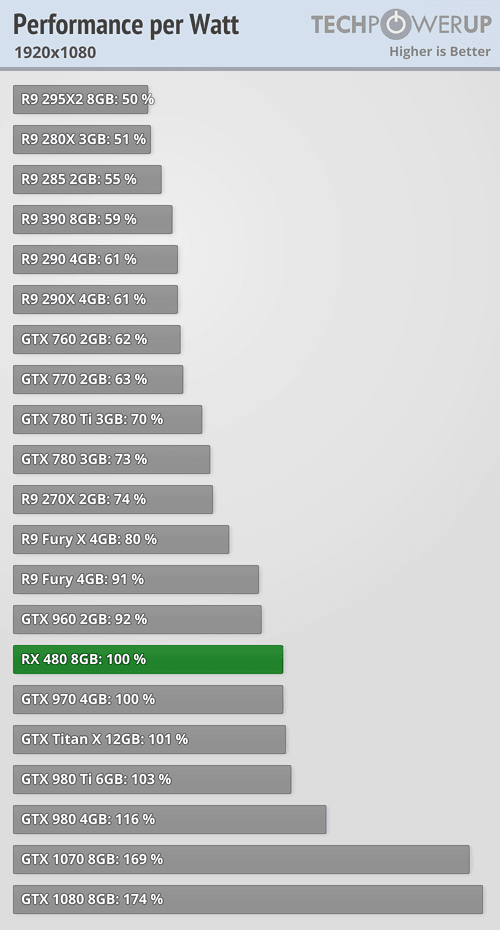If the exact percentage is irrelevant, then maybe you shouldn't post exact percentages? The least you could do is own it and admit your numbers were very off.
I'm not sure why you are so puritanical. I used some numbers based on a review of an aftermarket card which was boosting to nearly 1.9GHz, obviously every card varies out of the box. There's no absolute performance delta since every card, even reference cards, can vary as much as 150+MHz in boost clocks out of the box.
Secondly, whether its a 53% delta (as per Techpowerup), or a 70% delta (of a card with a higher boost clock out of the box), the point still stands that a 25% cut down GP104 (which has functionally 5.4 billion transistors) is outperforming the RX480 by a wide margin, which has 5.7 billion transistors.
You are tied up on semantics. The point I'm trying to make is what this means for Vega.
After all, AMD still is limited by the laws of manufacturing, die size limits, and of course TDP. They have to make gargantuan improvements in perf per watt and clock speed to make Vega relevant at a 300W TDP. Now it might be a 375W card on water at 1600MHz, I dunno. But from the looks of it that would be the least it would take to fall in somewhere between 1080 and Titan X. I'm not sure they would want to go that route since I imagine profit margin would be extremely low on such a SKU whereas Nvidia is making a killing without having to push their chips that far or have to build expensive power delivery on their reference board just to compete.
If that's the case AMD might decide to have Vega compete with the mid end, not high end with Nvidia. What that means for the consumer is possibly no competitive downward pressure on prices for Nvidia GPUs (particularly no incentive to have a 1080 Ti priced like the 980 Ti, or cause much if any drop in the price of 1070/1080) until the next generation of cards in 2H 2017.




